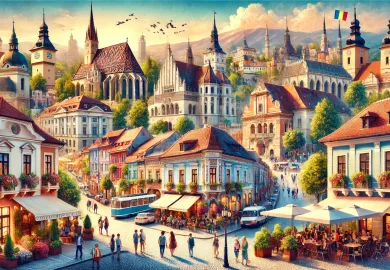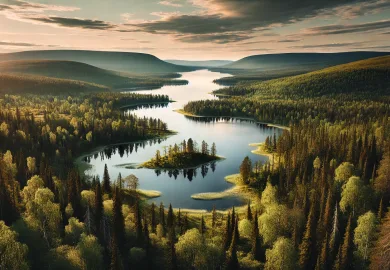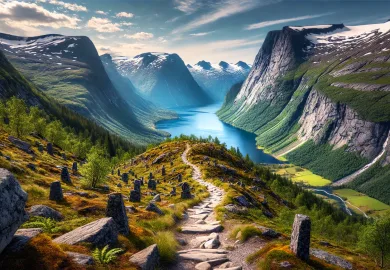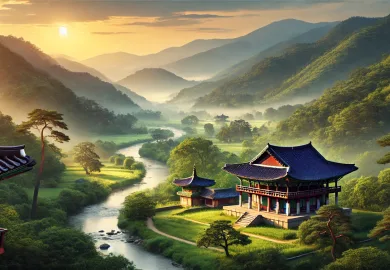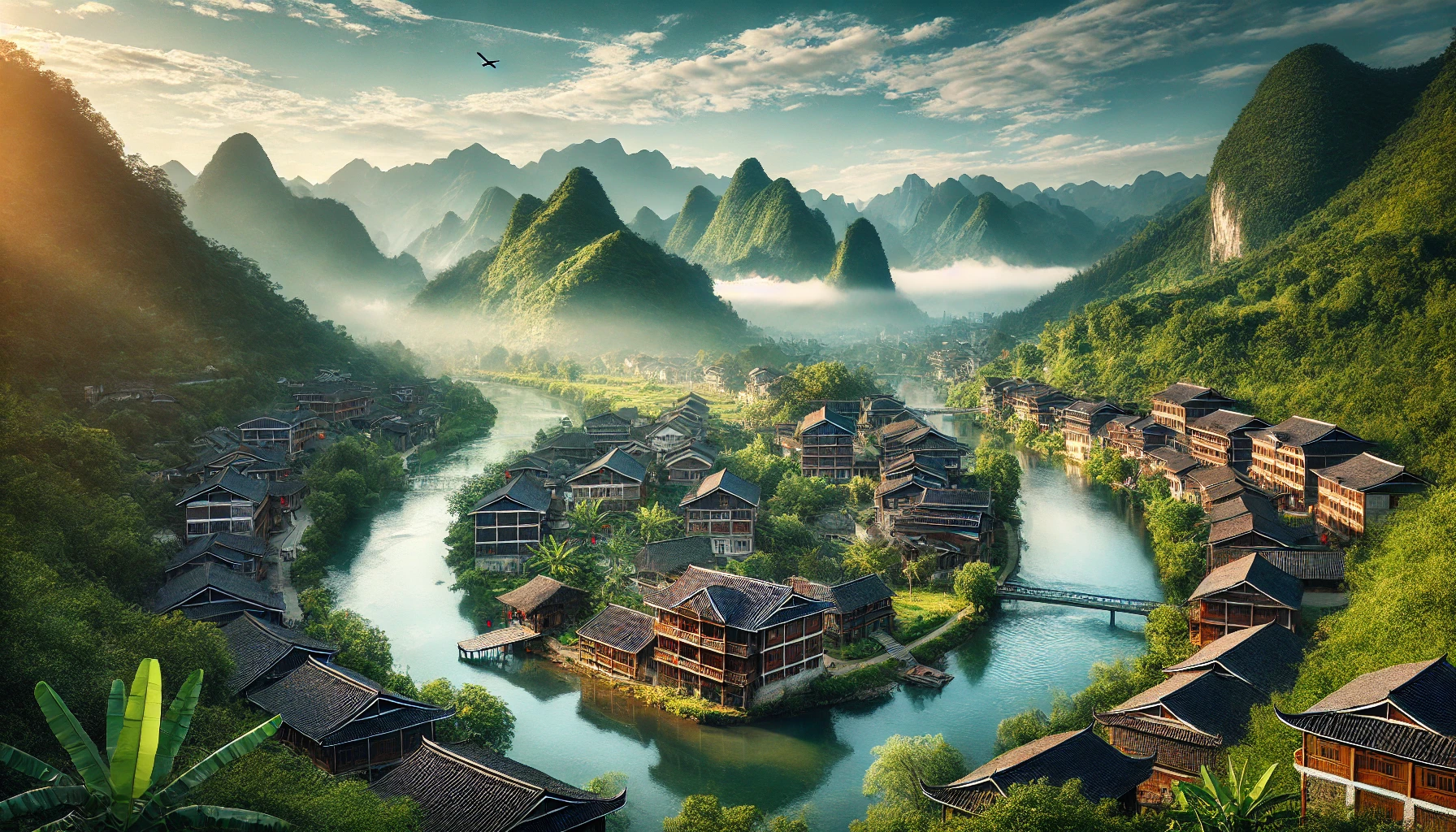
China is a land of vast landscapes, rich history, and dynamic cultural diversity. While many travelers flock to well-known spots like the Great Wall, the Forbidden City, or Shanghai’s skyline, there are unseen places in China that offer an equally mesmerizing experience. These hidden gems of China remain unexplored by mainstream tourism, but they captivate those willing to wander off the beaten path. From ancient villages nestled in misty mountains to remote islands, this article unveils the best-kept secrets in China that are waiting to be discovered.
Explore the Ancient Village of Guizhou: A Hidden Gem in Southwest China
Tucked away in the lush mountains of Southwest China, Guizhou is a province often overlooked by tourists. This hidden treasure is home to ancient villages, each offering a unique glimpse into China’s ethnic diversity and traditions. One of the most remarkable spots is Xijiang Qianhu Miao Village, the largest Miao ethnic group village in the world.
The village, surrounded by verdant rice terraces and mist-shrouded hills, transports visitors back in time with its traditional wooden houses and winding stone paths. Here, the Miao people preserve their rich cultural heritage, evident in their colorful festivals, intricately embroidered costumes, and lively folk music. Cultural immersion is one of the main draws of Guizhou, making it an ideal destination for travelers seeking an authentic experience away from the urban hustle.
Aside from its cultural wealth, Guizhou also boasts dramatic landscapes. The Huangguoshu Waterfall, one of the largest in China, cascades majestically down limestone cliffs, creating a sight that rivals the more famous waterfalls in the country. For adventure seekers, Guizhou offers countless opportunities for hiking, with trails that meander through terraced fields, karst landscapes, and tranquil river valleys.
Discover the Enchanting Landscapes of Zhangye Danxia Landform
Located in the northern part of Gansu Province, the Zhangye Danxia Landform is a surreal, otherworldly landscape often referred to as the “Rainbow Mountains” of China. This remote area is a UNESCO World Heritage site and one of the most visually stunning places in the country, yet it remains relatively unknown to many travelers.
The landscape is defined by multicolored cliffs, rolling hills, and striking geological formations, which are the result of millions of years of sandstone erosion. The mountains appear in a vibrant palette of red, orange, yellow, and green, as if nature has painted the earth with a giant brush. As the sun rises and sets, the colors shift and dance across the terrain, creating a breathtaking spectacle that feels almost surreal.
While the Zhangye Danxia Landform has gained some attention in recent years, it still sees a fraction of the visitors compared to other natural wonders in China. The region’s remote location ensures that it remains a tranquil and uncrowded destination. For photographers and nature enthusiasts, this hidden gem offers an unforgettable experience of China’s unique geology.
Uncover the Mysteries of Lugu Lake in Yunnan
Lugu Lake, nestled between the borders of Yunnan and Sichuan provinces, is another hidden treasure in China. This pristine, sapphire-blue lake is surrounded by towering mountains and lush forests, making it one of the most picturesque locations in the country. Lugu Lake is also known as the “Mother Lake” and is home to the Mosuo people, one of the last matriarchal societies in the world.
The Mosuo culture is what truly sets Lugu Lake apart from other scenic spots in China. The Mosuo people practice a unique form of family structure, where women are the heads of households, and marriage is an unconventional concept. Visitors can learn about this rare way of life by staying in traditional homestays, participating in local festivals, and exploring the villages scattered around the lake’s shore.
In addition to its cultural significance, Lugu Lake offers plenty of opportunities for outdoor activities. The crystal-clear waters are perfect for boating, and the surrounding mountains provide excellent hiking trails with panoramic views of the lake. The peaceful atmosphere of Lugu Lake makes it an ideal destination for travelers seeking serenity and natural beauty far from the tourist crowds.
Journey to the Remote Islands of Zhoushan Archipelago
For those craving coastal scenery, the Zhoushan Archipelago offers some of the most underrated islands in China. Located off the coast of Zhejiang Province, the archipelago consists of over 1,000 islands, each offering a mix of untouched beaches, traditional fishing villages, and hidden temples. One of the most fascinating islands is Shengsi Island, known for its serene beauty and clear waters.
Shengsi Island is famous for its abandoned fishing village that has been overtaken by nature. Here, ivy-covered houses stand as silent reminders of the island’s former bustling life. The sight of these abandoned villages, now completely consumed by lush green vegetation, is both haunting and beautiful. It’s a photographer’s paradise and a dream destination for explorers who love to venture into forgotten places.
Beyond Shengsi, the Zhoushan Archipelago offers other islands that cater to beach lovers, seafood enthusiasts, and those looking for spiritual retreats. Mount Putuo, one of China’s four sacred Buddhist mountains, is also located here and is home to several ancient temples perched on rocky cliffs. The islands are best visited during the warmer months when the seas are calm, and the islands come alive with color and activity.
China’s hidden places are as diverse as its more popular destinations, offering a different kind of travel experience. Whether you’re drawn to ancient villages, rainbow-colored mountains, serene lakes, or remote islands, these unseen places promise unforgettable adventures. So, pack your bags and set off on a journey to discover the lesser-known treasures of China!

